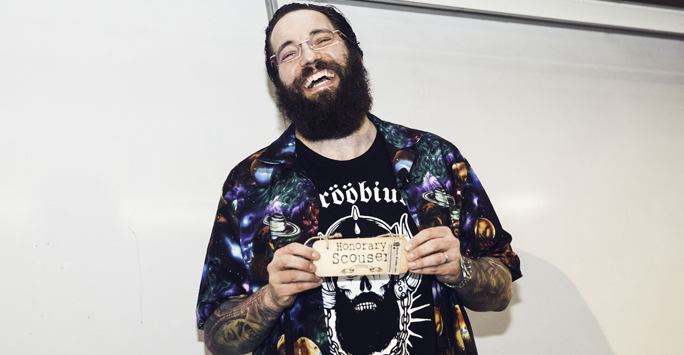It’s a Tuesday morning in October. Dr Matt Taylor (MPhys 1997) is sitting in his office at the European Space Research and Technology Centre (ESTEC), in Noordwijk, the Netherlands. The technical heart of the European Space Agency (ESA), this site is the incubator of the European space effort – a sprawling mass of glass and concrete, where projects that push the frontiers of the solar system are born.
Today though, Matt can put his feet up. In the past two years, he and his team have successfully landed a probe on a comet travelling at 135,000 kilometres per hour; sent the probe into orbit around the comet; and continually studied the comet’s surface. “Things were just about to kick off on the Rosetta mission when I came in as Project Scientist,” Matt recalls. “It’s been the most intense period of time for me in terms of work, and that’s the same for everyone else on the mission – absolutely manic.”
At the end of September 2016, the Rosetta probe concluded its epic mission in a controlled impact with the comet it had been studying for two years. But that wasn’t the signal for mission complete. “We’re now about to start working out what the Rosetta data is telling us and really open our eyes to comets and the solar system in general. The mission was the equivalent to us grabbing hold of the Rosetta Stone itself, looking at it and saying, ‘Right... what’s this?’ There’s decades of work still to be done.”
Matt’s introduction to the wonders of the cosmos happened largely by chance during an introductory lecture at the start of his degree at the University of Liverpool. “It was run by Arthur James, an old professor with a big white beard, who just instilled in me an interest in what he was doing. A lot of my lecturers were like that. The quality of their lecturing, their enthusiasm and the way they put things forward inspired me to look into this field.”
A Londoner, Matt was attracted to study at Liverpool in the mid-90s both because of its distance from home and the fact that, as he puts it, “it was inevitably going to be cool because it was Liverpool.”
Also cool in the young scientist’s eyes was the Physics department. “It’s archaic thinking about this now, but we had a whole block of PCs – 20 in total – that we could all work on. Everything else had to be done in writing.”
Needless to say, things have changed in the years since Matt graduated. He recently returned to give a lecture, hosted by Professor Ronan McGrath – currently the Head of the School of Physical Sciences and once one of Matt’s own lecturers in the 90s.
“It was a bizarre experience,” he says. “An honour, but a very bizarre experience. I find it strange that people want me to give talks. Liverpool and the University have changed a lot – and all for the good by the looks of things. But there are still the old stomping grounds, so The Cambridge, The AJ [The Augustus John] are still there. Just walking around, you have all of these déjà vu moments.”
Matt was one of the first in his family to go to university. Interested in maths and science, he knew from a relatively young age that he wanted to become a professional researcher – but he didn’t picture himself working for ESA. A Levels led to an undergraduate degree, which led to a PhD and then post-doctoral placements. Ultimately, he found himself working with groups of scientists all over Europe and the US – eventually leading to his current role.
So what’s next? “We’ve got JUICE, a Jupiter mission coming up. There’s BepiColumbo going to Mercury. Oh, and we’re about to drop a lander on Mars next week as well. It’s all kicking off!”
The recent news regarding the tragic disappearance of this Mars lander in a way seems to further the pertinence of Matt’s advice for undergraduates today: “I’ve never had an A in my life – but I’ve tried my best. If you fail, pick yourself up, find out what went wrong, and work out how you can right it. Don’t give up, and try to have a laugh at the same time.”
